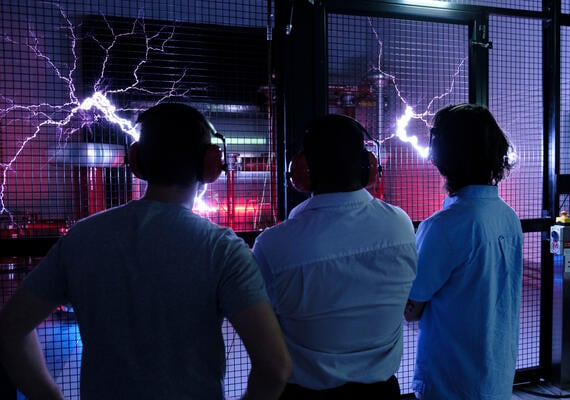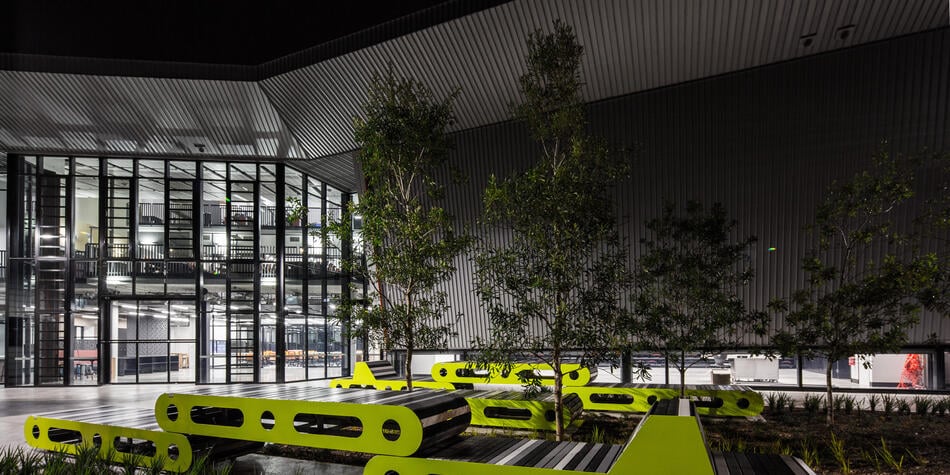Located at our Geelong Waurn Ponds Campus, the High voltage lab is used by students studying the Bachelor of Electrical and Electronics Engineering, final-year project students, research students and academic staff. Deakin invested over $1 million setting up the lab, making it one of only a few of its kind in Australasia.
Use our Tesla transformers
Students, researchers and industry can utilise a number of Tesla transformers within the lab to test electrical-related experiments. Examples of tests that are possible include: measuring of breakdown voltage of materials, testing the effect of pollution and contaminants on resistors (dust, dirt, salt), and examining the design of insulators used in high-voltage areas.


